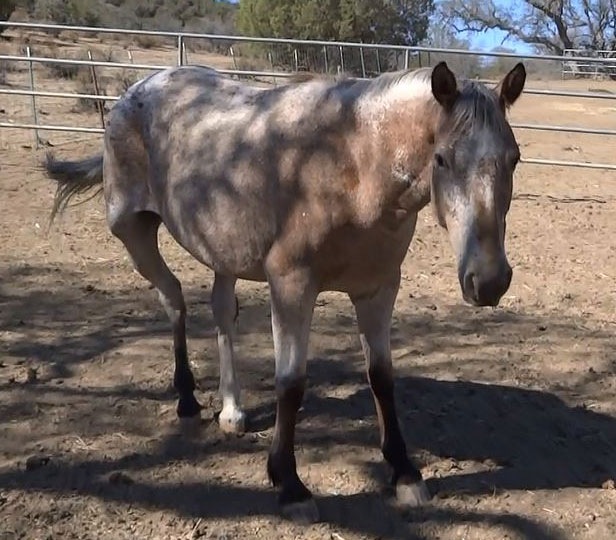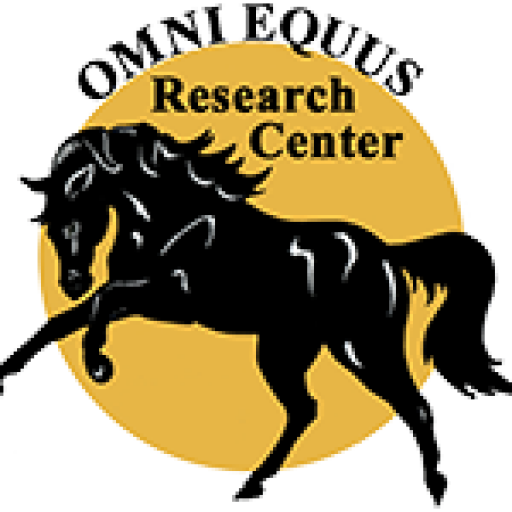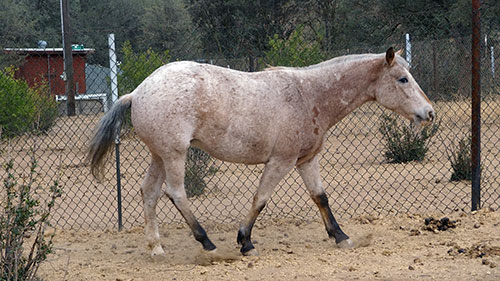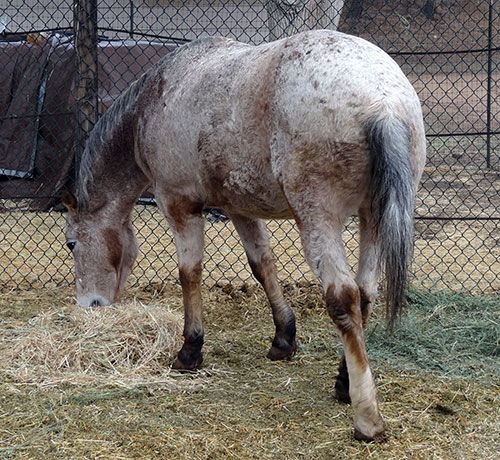 In 2012, I made a decision that in order to continue my personal research in the area of rehabilitation, I needed to take on another horse project. Because of the unprecedented success I had with Noble, I put out the word that I was looking for a deformed horse.
In 2012, I made a decision that in order to continue my personal research in the area of rehabilitation, I needed to take on another horse project. Because of the unprecedented success I had with Noble, I put out the word that I was looking for a deformed horse.
My plan was to put the new horse’s story on the website as an ongoing series of updates so the public could observe whatever progress I was making as it was happening. Without the proper facilities and equipment to produce the kind of scientific results the future Omni Equus will have, at least the public will see and experience the my own ongoing research. No outcome was to be predicted. Just a “let’s all watch and see together what I’m doing and how the horse responds together”.
Working with deformities is as new and unexplored to me and much as anybody. I was just as excited to watch and learn as you.
Along came the news that a little wild mustang, seriously deformed, had been rescued as part of a herd from a “feed lot” in Fallon, Nevada. Her name was Ladybug.
The story was that a herd of wild horses had been brought in destined for slaughter. Because there was no money to be made from the babies, the mothers were separated and sent away. The babies were slated to be shot. Asked if she wanted to rescue them, Jill Starr, founder of Lifesaver’s Wild Horse Rescue said “yes”.
Along with a group of the babies came several mares. Ladybug was one of them. This very lucky group was shipped down to Lifesaver’s headquarters in Lancaster, CA to be evaluated as to their health and possibly able to be domesticated for future adoption.
With this serious deformity, little Ladybug fostered 5 or 6 of these orphaned babies, providing some sense of security for them.
Once I heard this story, I contacted Lifesaver’s, explained my situation and made arrangements to meet them and Ladybug.
As I was being introduced to the wonderful people and brought out to meet this amazing little mare, I was privileged to watch the entire wild herd she was with, scooted through chutes and sorted out into small corrals so they could be worked with individually.
What a sad sight Ladybug was to look at. Her body was twisted into a half circle with the concave side on her left side. She looked like a truck ran into her. Her front and hind end both twisted inward and on order for her to move she shuffled sideways. It also appears her back was broken above the sacrum. When she arrived she was pregnant, but the baby was born prematurely and died. Her feet were growing inward to the right like foot long curluq’s and I was told they were much worse when she first got there. Trying to trim the feet of a wild horse is a challenging subject in itself and too upsetting to go into here. These people at Lifesavers are true Angels.
While Ladybug had received some handling, she was no way near domestication. The trainer, Angi, with slow and careful movements, was able to get a rope halter on her and I was invited to do my bodywork “magic”. I also, used very slow, careful movement as I attempted to introduce Ladybug to pressure into her muscles. Surprisingly, she actually responded somewhat positively, allowing me to do a little of the techniques I usually apply in a session. She sure did confirm to me how amazing these animals are in recognizing that I have the means to help them. As usual, I never force a horse to receive more than they can handle and when they say “no” it means “no”. My experience has taught that once a horse realizes they are in charge of what happens to their bodies with me, they are very open to negotiation for letting me try a little more the next time. It is a gradual process, in charge of the horse. How else am I going to convince an animal, “hey, if you let me hurt you a little where you already hurt, you’ll feel better.” Of course, Ladybug’s tolerance level was minimal but it was a great start.
I made the decision to adopt her, and being very happy that a special needs horse, normally un-adoptable would have a good home, they went all out to further her domestication. While I went out weekly to work on her as much as I could [as the distance was difficult at times] we all knew she needed to live with me so I could work with her daily. Lifesaver’s volunteers taught her to lead, and board a trailer as well as trimmed her feet to prepare her for her new home.
Since I’m not a wild horse handler, this was important. In the summer of 2013, Ladybug came home to me. Dave Pistone, who was the head honcho as the Lifesaver’s sanctuary here where I live in Twin Oaks, brought her up as part of the group effort to help this one little mare. The Lifesaver’s sanctuary is also located in Twin Oaks and Dave and I became good friends. He often drove up to say hi and check on how Ladybug was doing. This was great for me because he saw her periodically, and hearing him rave about how good she looks was so valuable as I was immersed in her development day to day.
Ladybug Arrives at Omni Equus Research Center
During the year before Ladybug came to me in twin Oaks, my work on her body (while limited) made some amazing changes in her body and how she moved. As one of the volunteers said as she galloped around, ”she almost looks normal”.
But as Angi pointed out, “she’s a full grown horse’ about 10 years old, and we don’t know how much her bones may have fused together permanently.
It didn’t matter. I went into this project with her with a lot of curiosity and no expectations.
As I finally write this down, Little Ladybug has been living with me and the other 7 horses for about 2 years. She has come to love and trust me, she’s charmed the 2 geldings in her pasture and overall has become a little diva. I wouldn’t trade her for the world and Rocky her boyfriend couldn’t live without her.
Ladybug is no longer a wild horse, there are times when she has flashbacks and thinks she is. I mostly ignore her “flip-outs” and react as if nothing is wrong. There is something to be said for PTSD in animals. I wrote in her journal every time I worked with her and videotaped and photographed her as best I could. Even when Ladybug is going through a phase of resisting my work, I can usually coax her into allowing me to do something. Always it is ultimately the horse’s choice how much or how little they will tolerate. In a world where these animals are “forced” to comply with human decisions, this is one time they have control over their body. I have learned over the years, that these horses are usually very polite, communicate clearly how they feel about what you are doing, what they don’t want you to do and if you pay attention instead of running yourself over their efforts to politely tell you, only then do they resort to defensive moves like biting and kicking.
With Ladybug and her wild background, this process of negotiation took a longer time than usual. Trying to get her to allow her feet to be trimmed was a nightmare for me (and her). It’s been a long ongoing project, one we still work on. It’s difficult with her deformity, to a large extent she is made to let the farrier do the job with the kindest methods we can employ. An example: 3 people have to help hold her up while one leg is lifted to be trimmed.
Another frustrating Ladybug issue, since she still insists I can’t touch her back legs (I’m finally allowed to touch her front legs….sometimes), when she tries to get up after laying down, in her struggle to get her little crooked legs under her, she continually kicks a hole in her right hind leg with her left. She won’t let me “doctor” it. Her vet and I have discussed drugs, but as Dr. Chris Comeau has concerns that she could fall and seriously hurt herself.
Ladybug has added so much joy with her spunk and kind heart into her pasture (before she arrived, they fought over food and weren’t as social with each other.) These hot race and old show horses have learned to be a horse again. She has certainly taught me a lot about horses, and overall, I wouldn’t trade her for the world.



